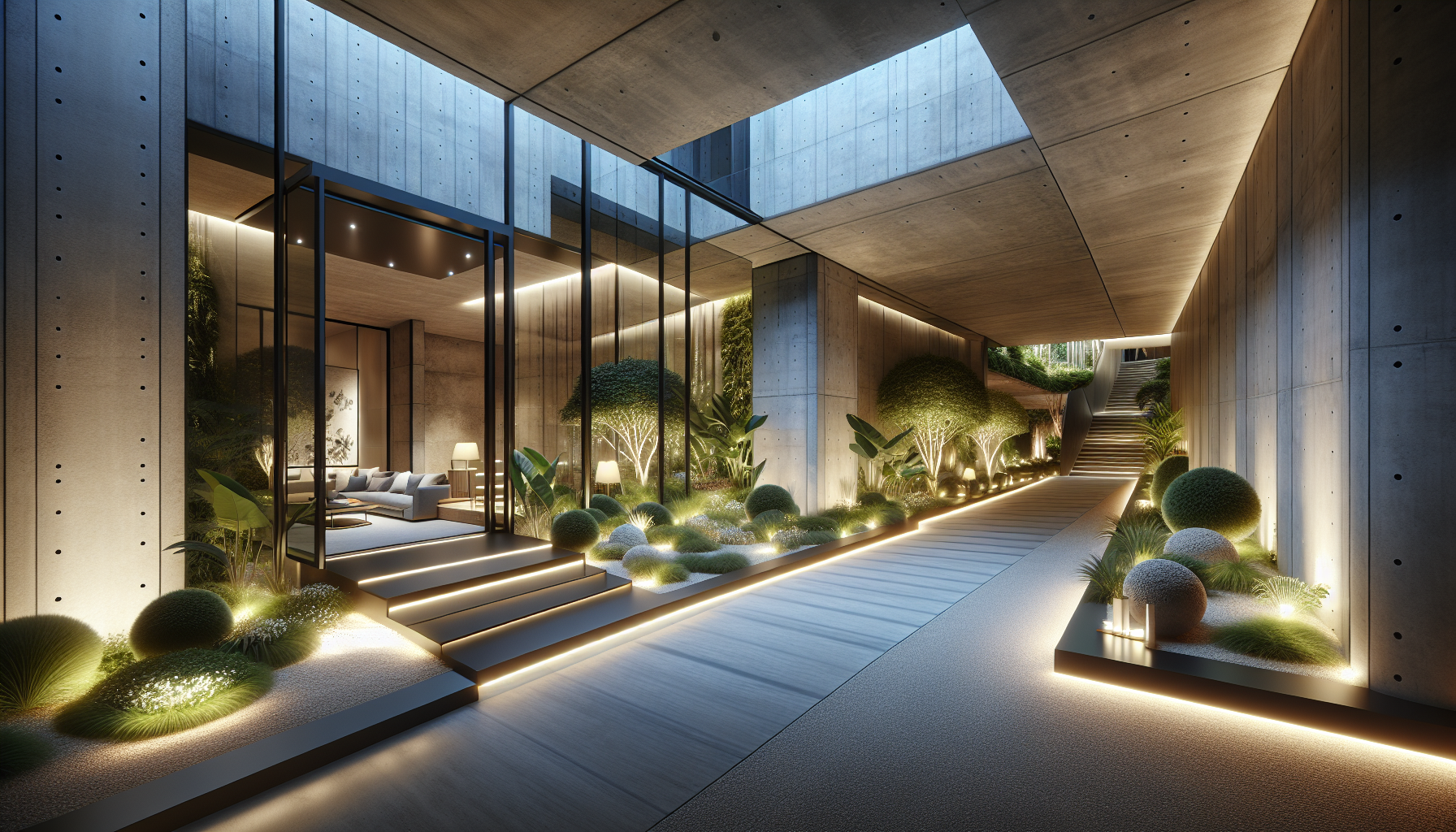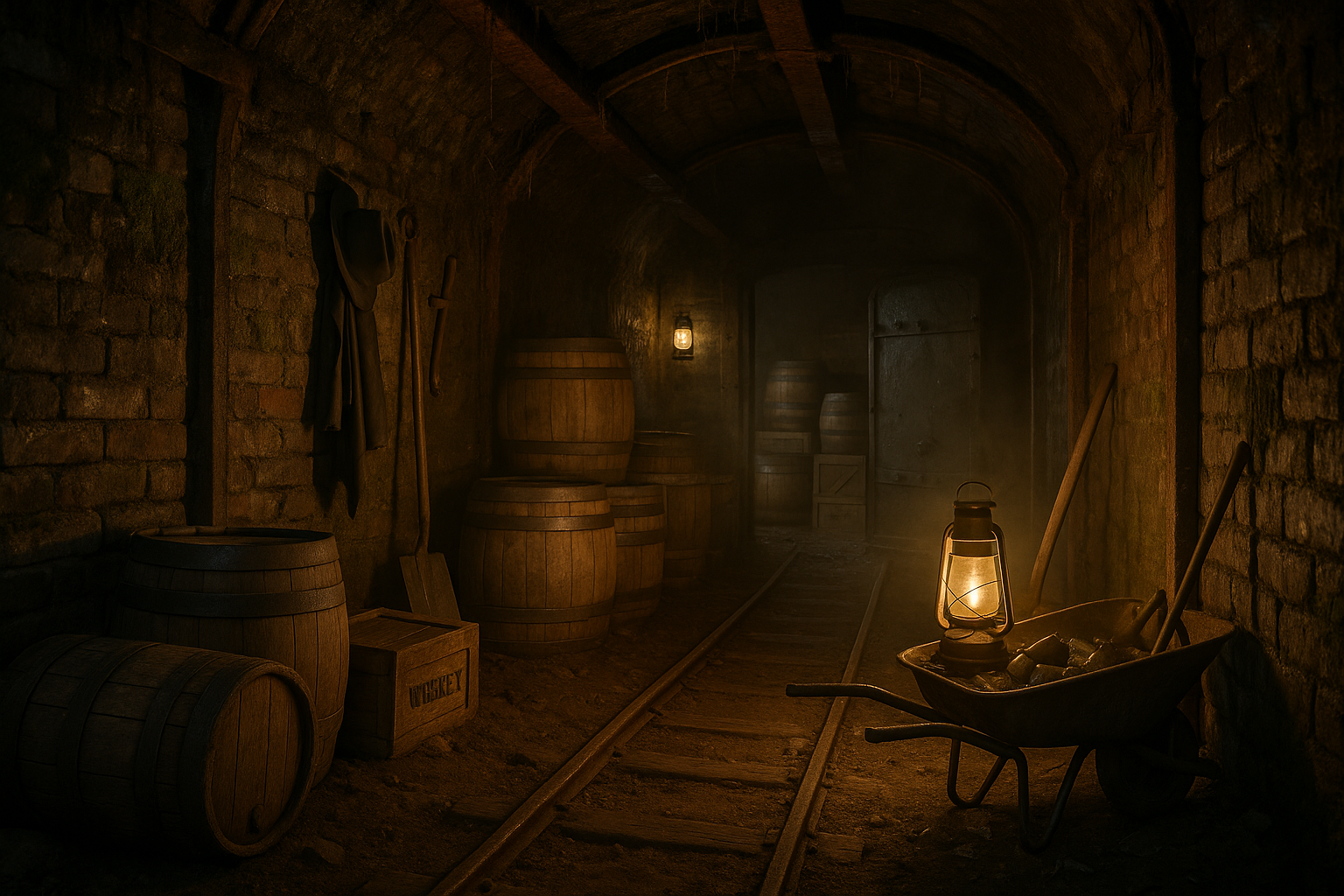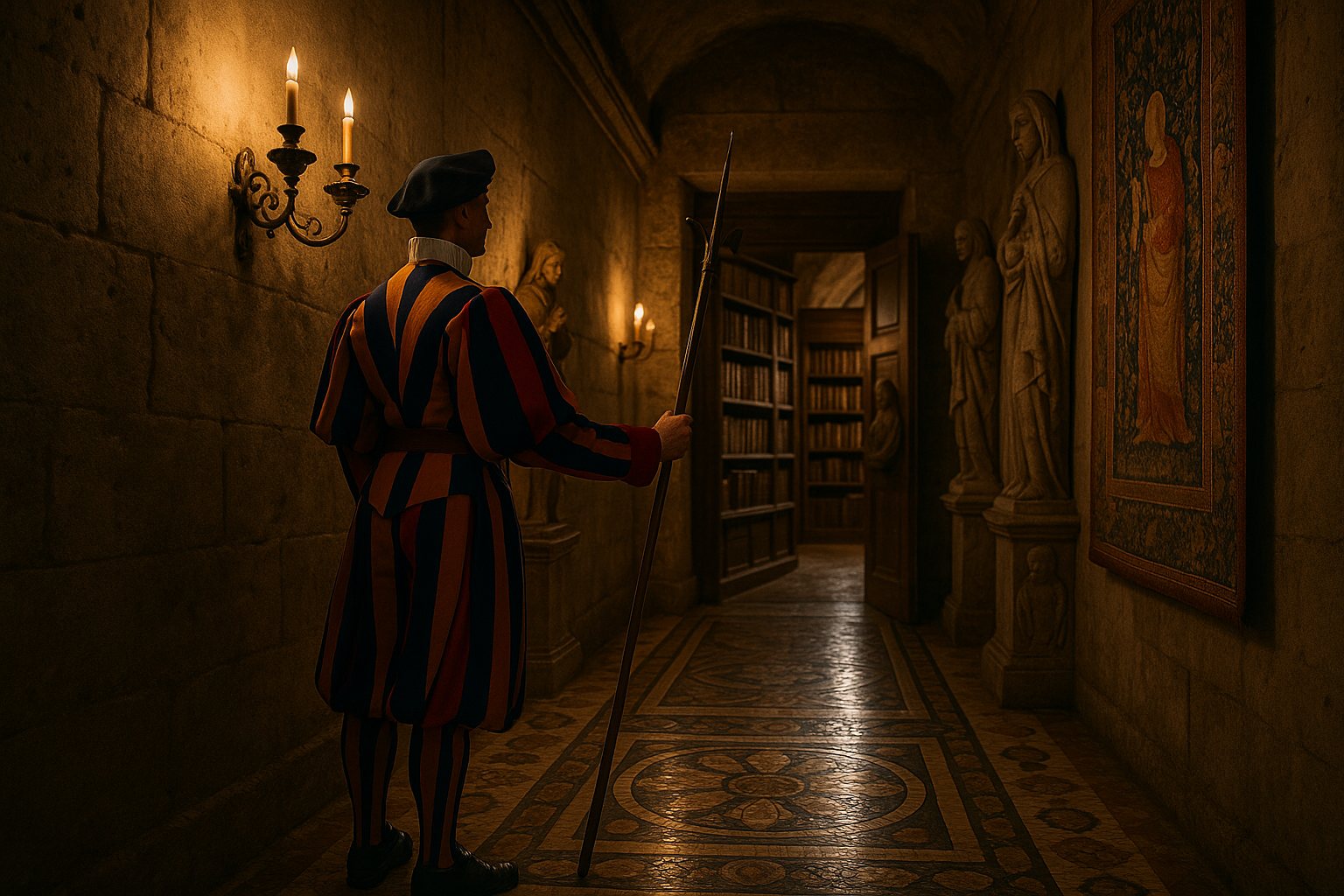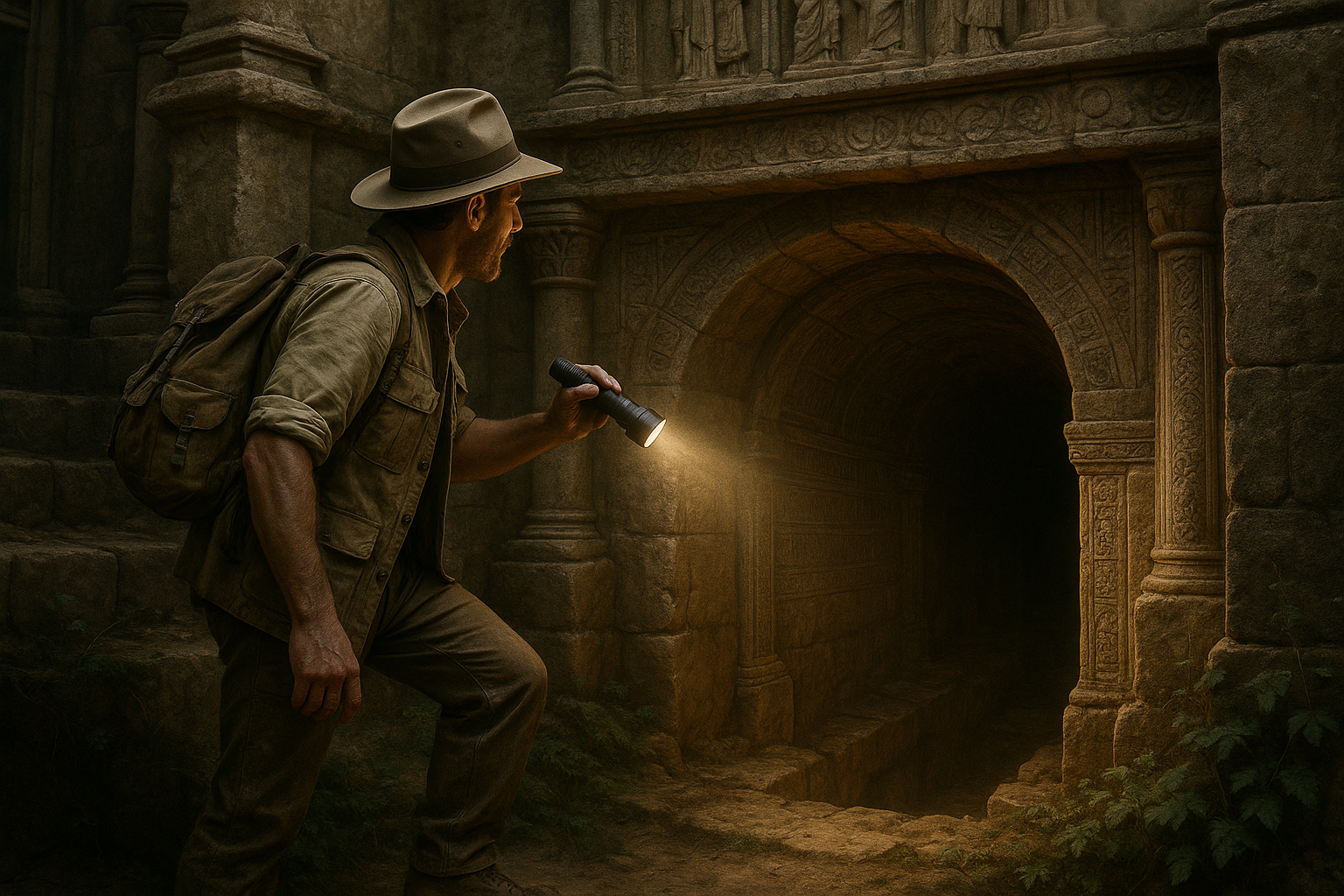In a world where urbanization is rapidly consuming our landscapes and sustainability is no longer just a buzzword but a necessity, an intriguing architectural trend is quietly gaining momentum: modern underground homes. This isn’t a scene from a sci-fi movie or a passage from a dystopian novel; it’s a real and increasingly popular choice for eco-conscious homeowners and forward-thinking architects. Welcome to the world of subterranean chic, where the boundaries of design, efficiency, and environmental harmony are being boldly redefined. 🏡
At first glance, the idea of living underground might conjure images of dark, damp basements or claustrophobic bunkers. However, today’s underground homes are anything but that. They are stunning feats of engineering and design, seamlessly blending luxury with sustainability. These homes capitalize on the Earth’s natural insulation, providing energy efficiency that is hard to achieve in traditional above-ground structures. The result? Homes that stay cool in the summer and warm in the winter, drastically reducing the need for artificial heating and cooling. In our quest for a greener planet, this trend represents a promising stride towards reducing our carbon footprint.
But why are people choosing to live beneath the surface in increasing numbers? For some, it’s about privacy and security, offering a sanctuary that feels both exclusive and protected. For others, it’s the allure of innovative design possibilities that challenge conventional architectural norms. Imagine a home where every room opens to a hidden garden, or panoramic windows offer views of stunning subterranean landscapes rather than crowded urban streets. The potential for creativity is vast, with architects using the unique constraints of underground construction to fuel unprecedented innovation.
In this article, we will delve deep into the multifaceted world of modern underground homes. We’ll explore the architectural innovations that make these homes not only viable but desirable. We’ll examine the environmental benefits and how they align with the principles of sustainable living. Additionally, we’ll look at the psychological and aesthetic aspects of underground living, challenging preconceived notions about space and light. Finally, we’ll share insights from homeowners and architects who have embraced this trend, offering a glimpse into a lifestyle that is as unique as it is forward-thinking. Whether you’re an architecture enthusiast, an environmental advocate, or simply curious about the future of home design, this exploration of subterranean chic promises to enlighten and inspire. 🌍
Introduction to Modern Underground Homes
Modern underground homes, often described as “Subterranean Chic,” have emerged as an intriguing architectural trend that captivates the imagination of eco-conscious and design-savvy individuals alike. These homes blend seamlessly with their natural surroundings, offering unique advantages in terms of energy efficiency, environmental impact, and aesthetic appeal. As urbanization continues to encroach on natural landscapes, the idea of moving below ground is not only practical but also environmentally responsible.
The allure of living underground dates back centuries, yet modern technological advancements have breathed new life into this ancient concept. Contemporary architects and builders are now able to create spaces that are not only habitable but also luxurious and cutting-edge. From innovative use of natural light to advanced insulation materials, modern underground homes provide comfort without sacrificing sustainability. As we explore this architectural phenomenon, it is essential to understand the factors driving its popularity, the technological innovations making it feasible, and the lifestyle benefits it offers.
The growing trend towards sustainable living is a significant driver of the underground home movement. With concerns over climate change and the depletion of natural resources, many are seeking ways to minimize their carbon footprint. Underground homes offer a unique solution, utilizing the earth’s natural insulation to maintain comfortable temperatures year-round while reducing the need for heating and cooling systems. Additionally, these homes often use renewable energy sources such as solar panels, further enhancing their eco-friendliness.
The Design and Architecture of Underground Homes
The architecture of underground homes is as varied as it is fascinating. Architects must consider numerous factors when designing these homes, from the geological composition of the site to the optimal orientation for natural light. Despite these challenges, the design possibilities are virtually limitless, allowing for creativity and innovation in achieving both aesthetic and functional goals.
One of the primary design considerations for underground homes is natural lighting. Since these homes are partially or entirely submerged, architects use innovative solutions such as skylights, light wells, and reflective surfaces to maximize natural light penetration. These elements not only illuminate the interior spaces but also create a connection with the outside world, preventing the home from feeling isolated or claustrophobic. For a visual understanding of these design elements, watch the video “Modern Underground Home Design” on the Green Building Channel.
Ventilation is another critical aspect of underground home design. Proper airflow is essential to maintain air quality and prevent issues like mold and mildew. Advanced ventilation systems, often combined with geothermal heating and cooling, ensure a comfortable living environment. Moreover, the strategic use of greenery and living walls can further enhance air quality while adding a touch of nature to the subterranean environment.
Beyond functionality, the aesthetic appeal of underground homes is a significant draw for many homeowners. The natural integration with the landscape often results in homes that are virtually invisible from above, blending seamlessly with their surroundings. This design approach not only minimizes the visual impact on the environment but also provides privacy and security. The use of natural materials, such as stone and wood, complements the home’s organic setting, creating a harmonious and tranquil living space.
Environmental and Economic Benefits of Underground Living
The environmental benefits of underground living are significant, aligning with the growing trend towards sustainable architecture. By utilizing the earth’s natural insulation, underground homes maintain a stable interior temperature, drastically reducing energy consumption for heating and cooling. This passive solar design approach not only cuts down on utility bills but also reduces the home’s overall carbon footprint.
Furthermore, underground homes often incorporate additional sustainable technologies, such as rainwater harvesting systems, green roofs, and solar panels. These features enhance the home’s self-sufficiency and further minimize its environmental impact. For those interested in exploring these technologies in depth, check out the video “Sustainable Technologies in Underground Homes” by EcoBuild Channel.
Economically, underground homes can offer long-term savings despite potentially higher initial construction costs. The energy efficiency of these homes translates to lower utility bills, providing financial benefits over time. Additionally, the durability and low maintenance requirements of underground structures contribute to their cost-effectiveness. Constructed from robust materials designed to withstand the pressures of being buried, these homes are resilient to weather extremes, natural disasters, and even noise pollution.
The potential for increased property value is another economic consideration. As the demand for sustainable living solutions grows, underground homes may become highly sought after, potentially leading to an increase in resale value. Furthermore, the unique and innovative nature of these homes can attract a niche market of buyers, ensuring a strong investment.
Lifestyle and Well-Being in Subterranean Chic
Living in a modern underground home offers a unique lifestyle experience, combining the tranquility of a natural setting with the comforts of a high-tech living space. These homes often provide a peaceful retreat from the hustle and bustle of urban life, allowing residents to reconnect with nature while enjoying state-of-the-art amenities.
One of the key lifestyle benefits of underground living is the enhanced connection to the natural world. Surrounded by earth and integrated into the landscape, these homes foster a sense of serenity and well-being. Residents often report improved mental health and reduced stress levels, attributed to the calming influence of their natural surroundings and the quiet, secluded environment.
The design of underground homes also promotes a healthy lifestyle through the incorporation of biophilic elements. Features such as indoor gardens, living walls, and natural materials create a restorative atmosphere, enhancing the overall quality of life. Moreover, the use of sustainable technologies aligns with the growing trend of environmentally conscious living, allowing residents to lead a lifestyle that reflects their values.
For families, underground homes offer a safe and secure environment, shielded from external noise, pollution, and potential natural disasters. The durability of these homes, combined with their often remote locations, provides peace of mind and a sense of security. Furthermore, the ample outdoor space typically surrounding underground homes offers opportunities for outdoor activities, gardening, and enjoying nature.
[Watch the video on Underground Living here](https://www.youtube.com/watch?v=3mKJSE7s0PE)

Conclusion
The trend of modern underground homes, often referred to as “Subterranean Chic,” represents a fascinating convergence of sustainability, innovation, and design ingenuity. Throughout this exploration, we’ve delved into the multifaceted benefits and challenges of building below the surface, shedding light on how these homes can redefine modern living in a rapidly changing world.
First and foremost, underground homes are a testament to environmental stewardship. By utilizing the earth’s natural insulation properties, these homes significantly reduce energy consumption, leading to a lower carbon footprint. This energy efficiency is not only beneficial for the environment but also translates into cost savings for homeowners. In a time when climate change is at the forefront of global concerns, adopting such sustainable practices in architecture is more crucial than ever.
Additionally, the aesthetic and functional benefits of subterranean homes cannot be overlooked. These homes offer unparalleled privacy and sound insulation, creating tranquil living spaces that are free from the noise and distractions of urban life. The unique design possibilities also allow for creative architectural expressions that blend seamlessly with the natural landscape, making each home a work of art in its own right.
However, constructing underground homes does come with its own set of challenges. The initial costs can be higher due to the specialized construction techniques required. Moreover, considerations around water drainage, ventilation, and natural light must be meticulously addressed to ensure a comfortable living environment. Despite these hurdles, the long-term benefits often outweigh the initial investment, especially as technology and construction methods continue to advance.
The cultural implications of living underground are equally compelling. These homes challenge traditional notions of domestic spaces and push the boundaries of how we perceive architecture. They encourage a closer relationship with the earth and promote a lifestyle that values sustainability and innovation.
To further explore the potential of subterranean living, it’s essential to stay informed and engage with ongoing research and developments in the field. For those interested in learning more, the following resources provide valuable insights: [1] “Earth-Sheltered Houses: How to Build an Affordable… (https://www.motherearthnews.com/green-homes/earth-sheltered-homes-zm0z11zkon), and [2] “The Benefits of Building a House Underground” (https://home.howstuffworks.com/underground-homes.htm).
In conclusion, the trend of modern underground homes is not just a fleeting architectural curiosity, but a profound shift towards more sustainable, innovative, and harmonious living spaces. As we continue to grapple with environmental challenges and the demands of urbanization, subterranean chic presents a viable and exciting path forward. We invite you, the reader, to reflect on how this trend might inspire your own living spaces and to consider the broader implications for our planet’s future.
Feel free to share this article with others who might be intrigued by the possibilities of underground living. Your thoughts and comments are invaluable to us, so please join the conversation and let us know how you envision the future of home design. Together, let’s explore how subterranean chic can reshape the way we live, one home at a time. 🌍🏡
Toni Santos is a visual storyteller and artisan whose work explores the quiet power of what lies beneath. With a deep fascination for subterranean and hidden architecture, Toni uncovers the layers, voids, and forgotten spaces that shape our built environment from the shadows.
His art is a journey through the unseen — from ancient underground chambers to sealed passageways, service tunnels, and foundations buried in time. Each creation tells a story of silence, secrecy, and structure — revealing how absence and concealment can be just as meaningful as what’s visible above ground.
Whether working through visual compositions, architectural studies, or symbolic handcrafted pieces, Toni captures the soul of hidden spaces. His work bridges art and archaeology, blending design with discovery. Trained in visual design and traditional techniques, Toni creates with intention. His pieces don’t just depict — they interpret, inviting viewers to rethink what space, memory, and architecture mean when they’re hidden from view.
As the creative force behind Vizevex, Toni shares this perspective through curated visual narratives, symbolic collections, and interpretive essays that give voice to the quiet geometries beneath our feet.
His work is a tribute to:
The mystery of spaces built to be forgotten
The symbolism embedded in foundations, voids, and passageways
The timeless connection between human intention and hidden structure
Whether you’re an artist, an urban explorer, or someone fascinated by the unseen frameworks that support our world, Toni invites you into a realm where architecture becomes myth — one corridor, one layer, one buried story at a time.





